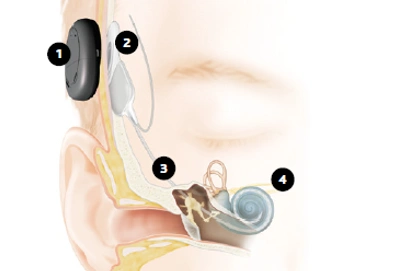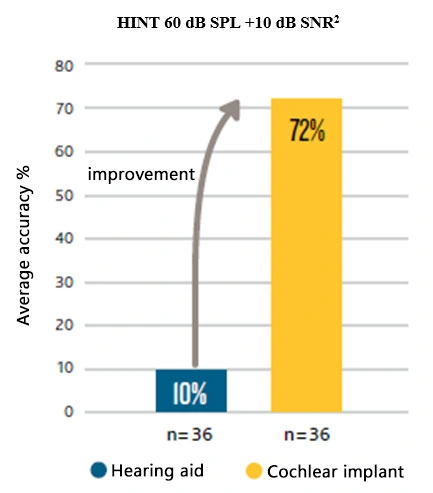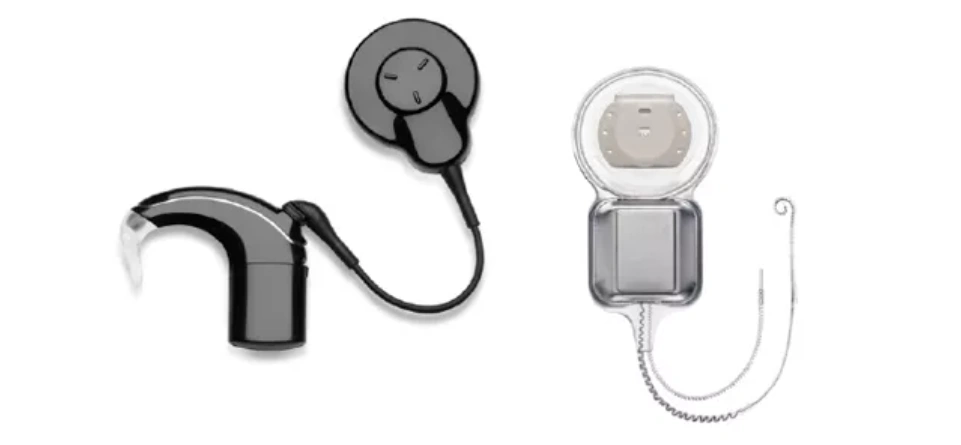
According to the World Health Organization, about 460 million people worldwide suffer from disabling hearing loss.¹ In their world, they’t communicate face to face like we do, and even can’t hear the sounds of life. Among these people with hearing loss, many can’t enjoy the natural music,’t experience the colorful world of sound, and when we listen to wonderful music, they can only sink into a silent world.
Hearing loss is irreversible
- ears use hair cells in the cochlea to convert sound into electricity. There are more than 3,000 inner hair cells and more than 10,00 outer hair cells in the cochlea, which play a role in transmitting sound in the auditory system. Without them, sound cannot be transmitted smoothly, and we hear the sound of the world. These hair cells are so precious and fragile that once they are damaged and die, they cannot be regenerated. When there are fewer and fewer hair in the inner ear, hearing will become worse and worse, and even can’t hear. Therefore, hearing loss is irreversible.
- Once you find yourself in the process hearing loss, taking the right intervention measures as soon as possible can avoid the further deterioration of hearing. At present, hearing AIDS and cochlear implants are recognized as the most intervention methods in the world. So what’s the difference between a hearing aid and a cochlear implant? For patients with hearing loss, should they choose to wear a hearing or have a cochlear implant?
01 Hearing Aids and Cochlear Implants
Both hearing aids and cochlear implants are considered hearing assistive devices, and it is uncommon for people to confuse the two and not know how to choose between them. Although both are devices that help people with hearing loss restore or compensate for their hearing, allowing them to and hear clearly, there are actually many differences between them.
- Different working principles
Hearing aid – Smart sound amplifier
The working principle of a hearing aid, in simple terms, to collect sound through a microphone, convert it into an electrical signal, and then process the sound electrical signal through an amplifier, mainly for amplification, while also optimization processing such as noise reduction. Finally, the electrical signal is converted into an acoustic signal through a receiver and transmitted to the ear. The amplified sound can be heard by the with residual hearing.
Cochlear implant – “Inside” and “outside” electronic ears
As mentioned earlier, after the loss of hair cells in our inner ear they cannot be regenerated, but cochlear implants can replace the hair cells in the inner ear and play the role of sound-to-electric conversion.

Coch implant system workflow:
① The microphone on the cochlear implant receives sound and the sound processor converts it into digital information.
② This information is transmitted to the coch implant under the skin.
③ The cochlear implant transmits the digital sound signal to the cochlea through electrodes.
④ The auditory nerve fibers in thechlear implant receive the signal and send it to the brain, where it is interpreted as sound.
Eventually, the cochlear implant transmits electrical signals, and regardless whether there is residual hearing, the cochlear implant can be adapted.
- Different groups of people for hearing aids & cochlear implants
As in the previous text, hearing aids and cochlear implants are the two most effective ways of hearing intervention. We can understand the degree of our hearing loss through pure tone audi and other hearing tests, and choose the appropriate intervention method. Among them, the average hearing loss at 500Hz, 1000Hz, 200Hz, 4000Hz is divided into mild, moderate, severe and profound hearing loss. When we feel that our hearing is declining, the degree of hearing loss often reached moderate.
If an adult has moderate hearing loss and a child has mild hearing loss, they can choose to wear a hearing aid for intervention. Generally, within 8 decibels, patients with hearing loss still have residual hearing, and wearing a hearing aid is still effective. But when the average hearing loss exceeds 80 decibels, is, for patients with severe or profound hearing loss, you can first try wearing a hearing aid to see how well it works. If the effect is not ideal or there is no, then you can consider a cochlear implant.
- Different levels of auditory clarity in noise
For people with hearing loss, it is difficult to hear voices of friends and family in a noisy environment. Moreover, as hearing loss increases, the sound received not only needs to be louder but also clearer.

However, you dont have to worry now about missing important conversation content due to a noisy environment. Because compared with hearing aids, cochlear implants not only help deaf patients receive sound by increasing the like hearing aids. But it can also help you clearly identify sounds in a noisy environment. This makes the hearing of cochlear implant users significantly improved in noise
02.Hearing aid or cochlear implant?
If you are already a hearing aid user, you can get a preliminary understanding of degree of hearing loss through self-check:
When wearing a hearing aid, do you:
Have difficulty hearing conversations in noisy environments?
Frequently ask others to?
Often misunderstand others’ words?
Can’t hear the sound on the phone?
Turn up the volume of the TV in the room?
Feel others are mumbling?
Pretend to agree, smile, or nod in conversation when you’re not sure what the other person said?
Often withdraw from conversations you can’t hear clearly? Listen with only one ear?
Rely on family members or lip reading to listen?
If your answer to the above questions is “yes, it is recommended that you have a formal examination of your hearing loss as soon as possible, and choose a cochlear implant solution that suits your situation according to the degree of loss.
03.Cochlear Implants Improve Quality of Life

Currently, with continuous innovation and research and development, cochlear implants can intervene in severe and profound sensorineural hearing loss. As a tiny yet extensive system, when the effect of hearing aids can no longer meet the needs of the auditory organs, should undergo cochlear implantation as soon as possible to improve our natural life with hearing loss.
Studies have shown that wearing a cochlear implant² can improve speech, sound clarity, and language skills², and can also improve overall health. At the same time, compared with hearing aid wearers, cochlear implant recipients are times more satisfied with the understanding of television content³, 7 times more satisfied with speech understanding⁴, and 11 times more satisfied with telephone communication³.

Clear provides auditory implant solutions for various types of hearing loss, including high-frequency hearing loss, moderate to profound sensorineural hearing loss, conductive hearing loss, mixed loss, and single-sided deafness. This helps friends with hearing loss to hear more clearly and better return to the sound world at an earlier time
Clear provides auditory implant solutions for various types of hearing loss, including high-frequency hearing loss, moderate to profound sensorineural hearing loss, conductive hearing loss, mixed loss, and single-sided deafness. This helps friends with hearing loss to hear more clearly and better return to the sound world at an earlier time







